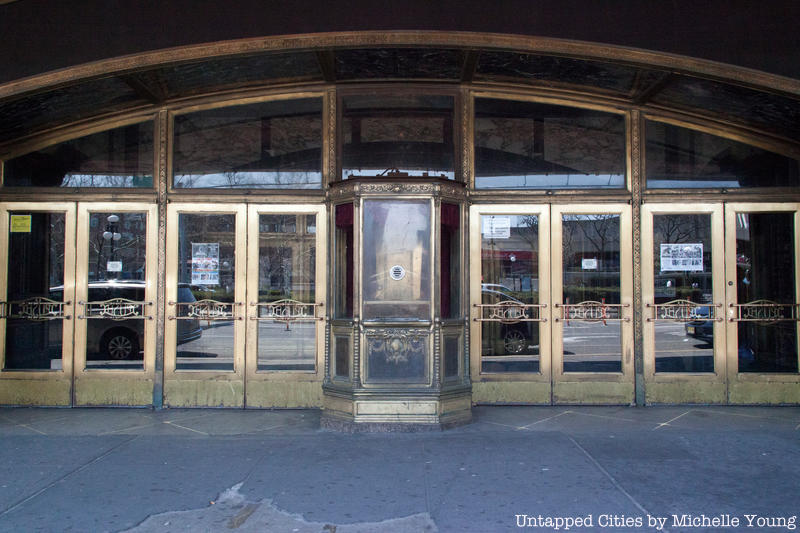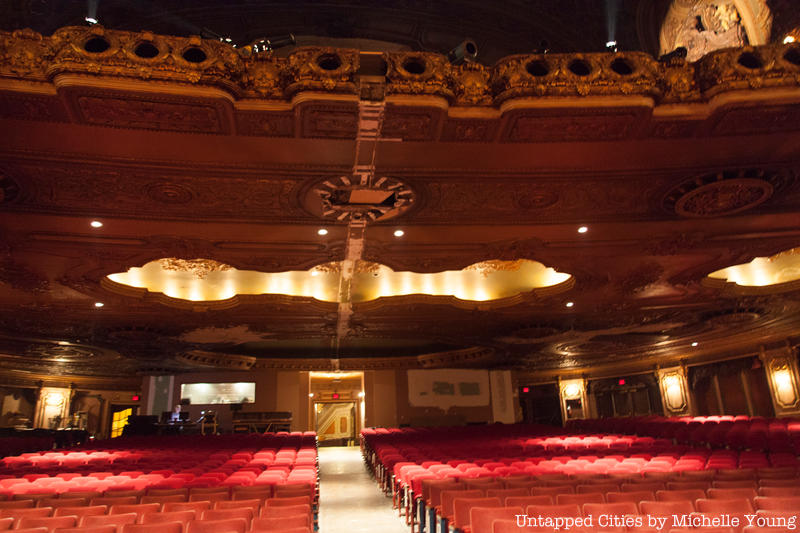9. The Loew’s Jersey Theater Was Slated for Demolition

In 1974, the main theater was subdivided into a triplex theater with sheetrock walls inserted into the center of the balcony. You can see the scars of that “renovation” today if you look up. This change rendered the theater unusable for live shows and the main stage got covered in trash, while the dressing rooms fell into serious disrepair, according to the Friends of the Loew’s. Then in 1986, the Loew’s Jersey Theater was closed and slated for demolition.
 The scar of the conversion of the main auditorium can still be seen in the center aisle, if you look up
The scar of the conversion of the main auditorium can still be seen in the center aisle, if you look up
But even before the closure, the area between the stage and the balcony rail was abandoned with decades of dust and soot piling up. The original seats in this front area were ripped out and trashed. In the back of the theater, a rough layer of concrete had been poured over the original floor. There were leaking pipes causing additional damage.
Jersey City purchased the theater in 1993 but planned to simply “mothball” it. The Friend’s of the Loew’s, which started doing advocacy work on the theater in 1991, believed it would eventually be demolished due to neglect. To counteract this, the organization applied for a $1 million grant from the Jersey City Economic Development Corporation and won it, then successfully lobbied city government to provide a matching grant. This money was earmarked for stabilization of the building and so all interior work has been done through volunteers, with equipment and supplies provided through donations. Various volunteers had expertise, some fixed the original lighting board on the stage, another fixed the movable orchestra stage floor. Additional city funds were acquired to get the building up to code, including repairing fire escapes, and an additional grant was given by the Hudson County Open Space Trust Fund.
The restoration continues, all by hand, with the Friends of the Loew’s volunteers tackling new projects one by one. Friends of the Loew’s writes that in the year 2013, “a total of 5,107 hours of volunteer labor were donated.”





